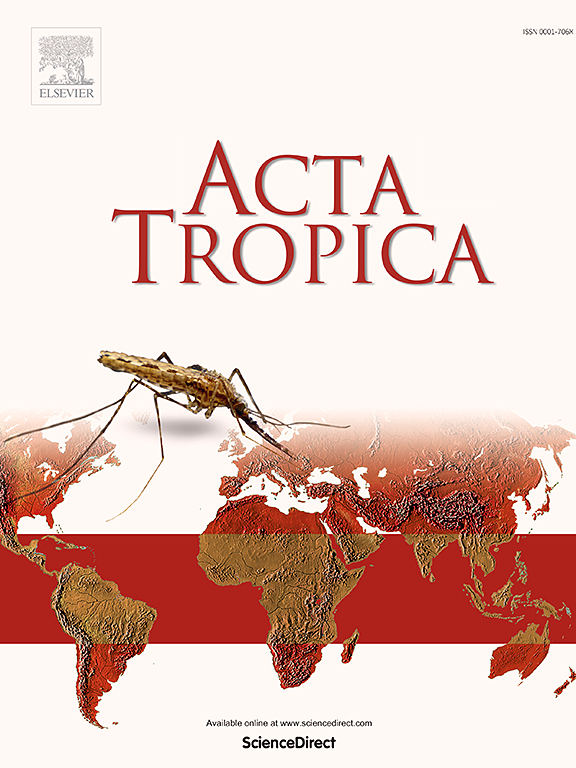Exposure to three zoonotic pathogens in the pig population of Southern Italy
IF 2.1
3区 医学
Q2 PARASITOLOGY
引用次数: 0
Abstract
Pigs represent a reservoir of infectious diseases that can be transmitted to humans through feeding or close contact. The aim of this study was to evaluate the seroprevalence of three zoonotic pathogens (Brucella suis, Mycobacterium avium, and Paslahepevirus balayani, also called hepatitis E virus) in the swine population in the Campania region, Southern Italy. A total of 370 animals from 31 farms were sampled and tested with specific commercial ELISAs. Antibodies against hepatitis E virus were detected in 41.4 % of the animals and in almost all the farms (83.8 %). Mycobacterium avium and Brucella suis were less widespread (seroprevalences of 3.5 % and 0 % at the individual level, 32.3 % and 0 % at the farm level, respectively). The univariate analysis of risk factors showed that sex (males), location (Naples), age (growers and finishers), farm size, and system (intensive) were related to higher hepatitis E virus prevalences. We also found higher seroprevalences in pigs belonging to districts where bovines were the main ruminant species. This variable and age were confirmed as risk factors also in multivariate analysis. The data obtained highlighted how pigs are HEV reservoirs also in southern Italy and that pigs in this region are also exposed to Mycobacterium avium but not to Brucella suis.
意大利南部猪群暴露于三种人畜共患病病原体。
猪是传染病的储存库,可通过喂养或密切接触传染给人类。本研究的目的是评估意大利南部坎帕尼亚地区猪群中三种人畜共患病原体(猪布鲁氏菌、鸟分枝杆菌和巴拉亚尼Paslahepevirus balayani,也称为戊型肝炎病毒)的血清患病率。对来自31个农场的370只动物进行了取样,并用特定的商业elisa进行了测试。41.4%的动物检测到戊型肝炎病毒抗体,几乎所有养殖场(83.8%)检测到戊型肝炎病毒抗体。鸟分枝杆菌和猪布鲁氏菌分布较少(个体血清患病率分别为3.5%和0%,猪场血清患病率分别为32.3%和0%)。危险因素的单因素分析显示,性别(男性)、地点(那不勒斯)、年龄(种植者和精加工者)、农场规模和系统(集约化)与戊型肝炎病毒较高的患病率相关。我们还发现,在以牛为主要反刍动物的地区,猪的血清患病率较高。在多变量分析中,该变量和年龄也被证实为危险因素。获得的数据突出表明,意大利南部的猪也是戊肝病毒的宿主,该地区的猪也暴露于鸟分枝杆菌,但未暴露于猪布鲁氏菌。
本文章由计算机程序翻译,如有差异,请以英文原文为准。
求助全文
约1分钟内获得全文
求助全文
来源期刊

Acta tropica
医学-寄生虫学
CiteScore
5.40
自引率
11.10%
发文量
383
审稿时长
37 days
期刊介绍:
Acta Tropica, is an international journal on infectious diseases that covers public health sciences and biomedical research with particular emphasis on topics relevant to human and animal health in the tropics and the subtropics.
 求助内容:
求助内容: 应助结果提醒方式:
应助结果提醒方式:


